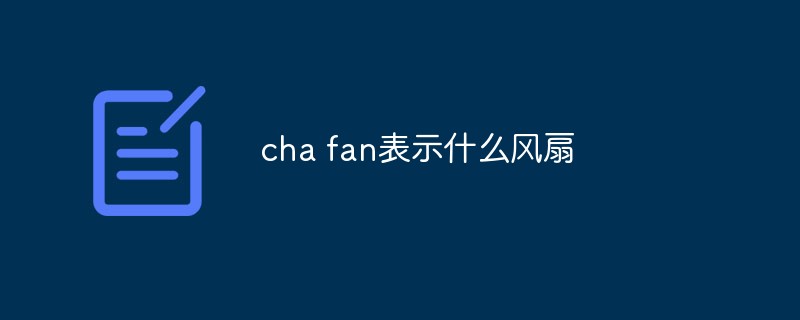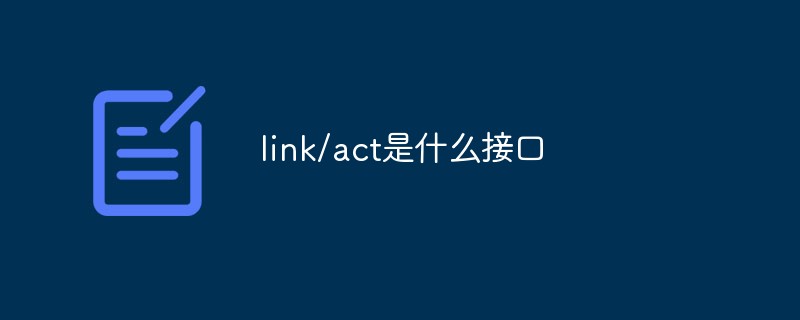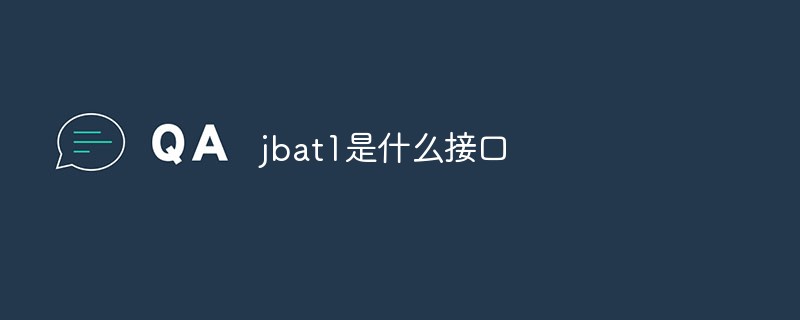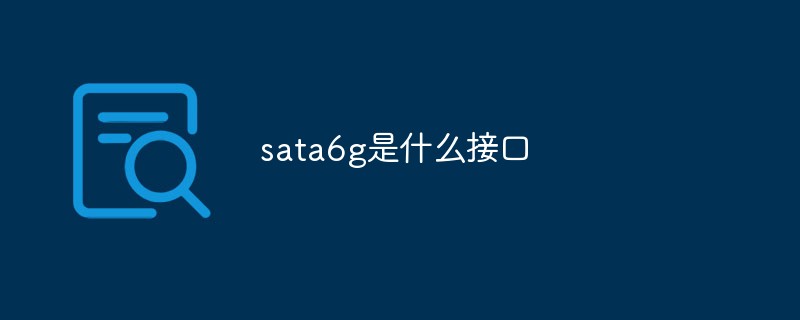 Backend Development
Backend Development PHP Tutorial
PHP Tutorial How to use abstract classes and interfaces to manage and operate custom data types in PHP
How to use abstract classes and interfaces to manage and operate custom data types in PHPHow to use abstract classes and interfaces to manage and operate custom data types in PHP
1. Introduction
In the PHP development process, we often need to define our own data types and modify them management and operations. In order to improve code reusability and scalability, using abstract classes and interfaces is a good way. This article will introduce how to use abstract classes and interfaces to manage and operate custom data types in PHP to achieve efficient development and maintenance of code.
2. The definition and difference between abstract classes and interfaces
- Abstract class definition
An abstract class is a class that cannot be instantiated and can only be used as the parent of other classes. class use. Abstract classes can contain abstract methods and non-abstract methods. Abstract methods are methods without a method body and must be overridden and implemented in subclasses. - Interface definition
An interface is a class that defines a set of methods. The methods in the interface are abstract methods and have no method body. Constants can also be defined in interfaces. A class can inherit methods from an interface by implementing one or more interfaces. - The difference between abstract classes and interfaces
There are some differences in the definition and use of abstract classes and interfaces: - Abstract classes can have instance fields and non-abstract methods, interfaces cannot.
- A class can only inherit one abstract class, but can implement multiple interfaces.
- Abstract classes and interfaces cannot be instantiated.
- The methods in the interface are abstract methods, and abstract classes can have abstract methods and non-abstract methods.
- Abstract classes can be used as parent classes of other classes, while interfaces can only be implemented.
3. Use abstract classes and interfaces to manage custom data types
In order to better understand how to use abstract classes and interfaces to manage and operate custom data types, we will use an example to illustrate. Suppose we want to define an animal class Animal for managing different types of animals. Here we define two subclasses, Cat and Dog, which inherit the Animal class respectively and implement the AnimalInterface interface. Specific code examples are as follows:
<?php
// 定义抽象类Animal
abstract class Animal {
protected $name;
protected $age;
public function __construct($name, $age) {
$this->name = $name;
$this->age = $age;
}
abstract public function say();
}
// 定义接口AnimalInterface
interface AnimalInterface {
public function run();
public function sleep();
}
// 子类Cat继承Animal类,并实现AnimalInterface接口
class Cat extends Animal implements AnimalInterface {
public function say() {
echo "I am a cat.
";
}
public function run() {
echo "Cat is running.
";
}
public function sleep() {
echo "Cat is sleeping.
";
}
}
// 子类Dog继承Animal类,并实现AnimalInterface接口
class Dog extends Animal implements AnimalInterface {
public function say() {
echo "I am a dog.
";
}
public function run() {
echo "Dog is running.
";
}
public function sleep() {
echo "Dog is sleeping.
";
}
}
$cat = new Cat("Tom", 3);
$cat->say();
$cat->run();
$cat->sleep();
$dog = new Dog("Hank", 5);
$dog->say();
$dog->run();
$dog->sleep();
?> 4. Summary
Through the above examples, we can see that using abstract classes and interfaces can well manage and operate custom data types. Abstract classes provide a way to constrain the properties and methods that are common to subclasses, while interfaces provide a way to specify the methods that a class must implement. In this way, we can better follow object-oriented principles during the design and development process and improve code reusability and scalability.
In the actual development process, if you need to define a group of classes with similar characteristics and behaviors, you can consider using abstract classes. If you need to define a set of methods that a class must implement, consider using an interface. Through the reasonable use of abstract classes and interfaces, the readability and maintainability of the code can be improved.
I hope this article can provide some help for you to understand how to use abstract classes and interfaces to manage and operate custom data types in PHP. If you have any questions or better suggestions, you are welcome to communicate with us.
The above is the detailed content of How to use abstract classes and interfaces to manage and operate custom data types in PHP. For more information, please follow other related articles on the PHP Chinese website!
 主板aafp是什么接口Aug 29, 2022 am 10:50 AM
主板aafp是什么接口Aug 29, 2022 am 10:50 AM主板上的aafp是音频接口;该接口的功能是启用前面板的“3.5mm”插孔,起到传输音频的作用,aafp跳线基本上由两个部分组成,一部分是固定在主板、硬盘等设备上的,由两根或两根以上金属跳针组成,另一部分是跳线帽,是一个可以活动的组件,外层是绝缘塑料,内层是导电材料,可以插在跳线针上。
 cha fan表示什么风扇Sep 15, 2022 pm 03:09 PM
cha fan表示什么风扇Sep 15, 2022 pm 03:09 PM“cha fan”表示的是机箱风扇;“cha”是“chassis”的缩写,是机箱的意思,“cha fan”接口是主板上的风扇供电接口,用于连接主板与机箱风扇,可以配合温度传感器反馈的信息进行智能的转速调节、控制噪音。
 ioioi是什么接口Aug 31, 2022 pm 04:50 PM
ioioi是什么接口Aug 31, 2022 pm 04:50 PMioioi是指COM接口,即串行通讯端口,简称串口,是采用串行通信方式的扩展接口。COM接口是指数据一位一位地顺序传送;其特点是通信线路简单,只要一对传输线就可以实现双向通信(可以直接利用电话线作为传输线),从而大大降低了成本,特别适用于远距离通信,但传送速度较慢。
 link/act是什么接口Feb 23, 2023 pm 04:14 PM
link/act是什么接口Feb 23, 2023 pm 04:14 PMlink/act是物理数据接口;交换机上的link/act指示灯表示线路是否连接或者活动的状态;通常Link/ACT指示灯用来观察线路是否激活或者通畅;一般情况下,若是线路畅通,则指示灯长亮,若是有数据传送时,则指示灯闪烁。
 jbat1是什么接口Jun 23, 2021 pm 01:38 PM
jbat1是什么接口Jun 23, 2021 pm 01:38 PMjbat1是主板电2113池放电跳线接口,对于现在市面上常见的主板来说,它们都设计有CMOS的放电跳线,让用户在操作时更加便捷,它也因此成为了CMOS最常见的放电方法。
 sata6g是什么接口Sep 14, 2022 am 11:46 AM
sata6g是什么接口Sep 14, 2022 am 11:46 AMsata6g是数据传输速度为“6G/s”的sata接口;sata即“Serial ATA”,也就是串行ATA,是主板接口的名称,现在的硬盘和光驱都使用sata接口与主板相连,这个接口的规格目前已经发展到第三代sata3接口。
 鼠标插在主机哪个接口Sep 13, 2022 pm 03:50 PM
鼠标插在主机哪个接口Sep 13, 2022 pm 03:50 PM鼠标插在主机的串口接口、PS/2接口或USB接口上。串行接口是最古老的鼠标接口,是一种9针或25针的D型接口,将鼠标接到电脑主机串口上就能使用。PS/2接口是1987年IBM公司推出的鼠标接口,是一种鼠标和键盘的专用接口,是一种6针的圆型接口。USB接口,是一种高速的通用接口,具有非常高的数据传输率,且支持热插拔。
 dc接口是什么意思Aug 24, 2022 am 10:47 AM
dc接口是什么意思Aug 24, 2022 am 10:47 AMdc接口是一种为转变输入电压后有效输出固定电压接口的意思;dc接口是由横向插口、纵向插口、绝缘基座、叉形接触弹片、定向键槽组成,两只叉型接触弹片定位在基座中心部位,成纵横向排列互不相连,应用于手机、MP3、数码相机、便携式媒体播放器等产品中。


Hot AI Tools

Undresser.AI Undress
AI-powered app for creating realistic nude photos

AI Clothes Remover
Online AI tool for removing clothes from photos.

Undress AI Tool
Undress images for free

Clothoff.io
AI clothes remover

AI Hentai Generator
Generate AI Hentai for free.

Hot Article

Hot Tools

SAP NetWeaver Server Adapter for Eclipse
Integrate Eclipse with SAP NetWeaver application server.

MinGW - Minimalist GNU for Windows
This project is in the process of being migrated to osdn.net/projects/mingw, you can continue to follow us there. MinGW: A native Windows port of the GNU Compiler Collection (GCC), freely distributable import libraries and header files for building native Windows applications; includes extensions to the MSVC runtime to support C99 functionality. All MinGW software can run on 64-bit Windows platforms.

VSCode Windows 64-bit Download
A free and powerful IDE editor launched by Microsoft

MantisBT
Mantis is an easy-to-deploy web-based defect tracking tool designed to aid in product defect tracking. It requires PHP, MySQL and a web server. Check out our demo and hosting services.

mPDF
mPDF is a PHP library that can generate PDF files from UTF-8 encoded HTML. The original author, Ian Back, wrote mPDF to output PDF files "on the fly" from his website and handle different languages. It is slower than original scripts like HTML2FPDF and produces larger files when using Unicode fonts, but supports CSS styles etc. and has a lot of enhancements. Supports almost all languages, including RTL (Arabic and Hebrew) and CJK (Chinese, Japanese and Korean). Supports nested block-level elements (such as P, DIV),





